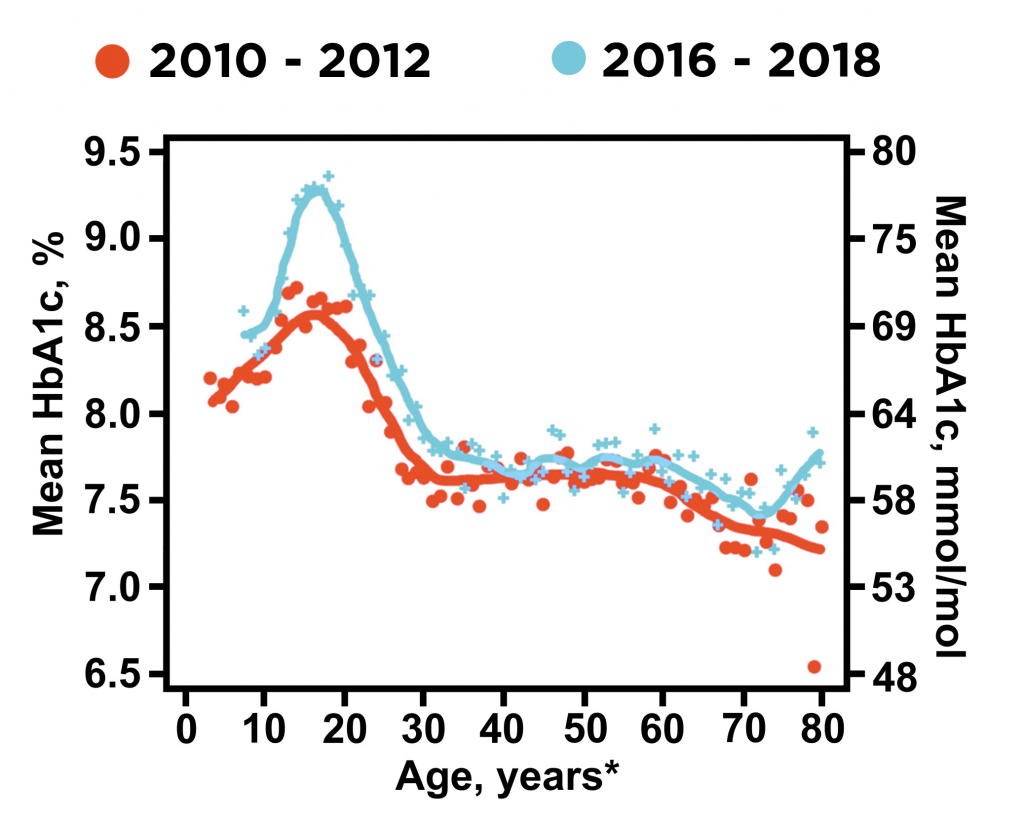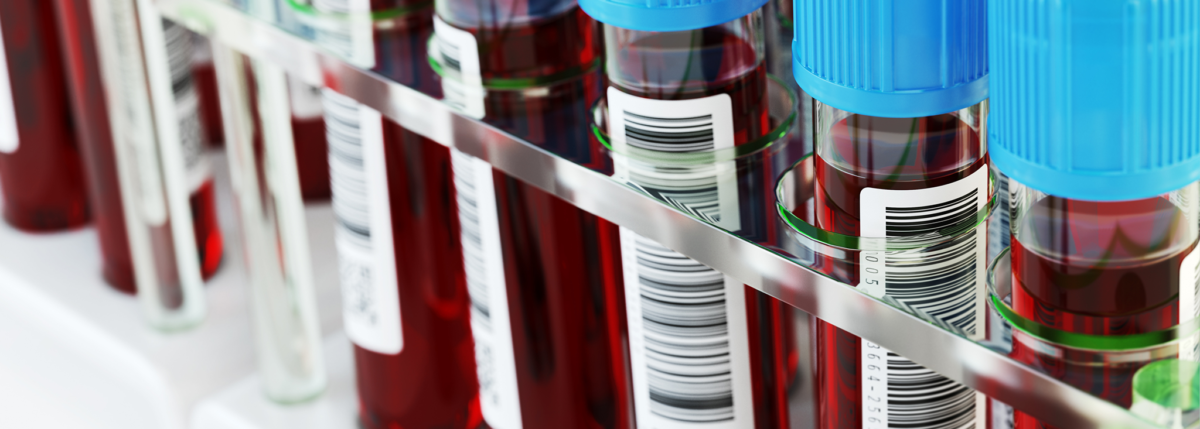Why Are HbA1Cs Going Up Among Young Adults?
Editor’s Note: Opinions expressed in this editorial piece are the author’s. There is no established causal link between increased use of technology and higher HbA1C. Within the 2016-2018 cohort, HbA1c was lower in pump and continuous glucose monitor (CGM) users across all age groups. Read the entire study from T1D Exchange here.
Concerning news
HbA1C Levels have gone up over the past decade, especially among young adults.
Recent statistics coming to us from the T1D Exchange registry in Diabetes Technology & Therapeutics suggest that the blood glucose control in young adults with type 1 diabetes have worsened from the statistics from five to seven years ago. Data on 22,697 registry participants ages 1-93 were collected from 2016-2018 and compared to the same data collected from 25,529 participants from 2010-2012. There were 9,657 participants who had data present in both 2010-2012 and 2016-2018. As demonstrated in the graph below, the biggest change in HbA1C was among those age 15-25.

Interestingly as HbA1Cs went up so did CGM use: from 7 percent in 2010-2012 to 30 percent in 2016-2018.
Possible explanations
The use of technology for diabetes management certainly has its advantages—those of us with type 1 diabetes have insight into our body’s functionality like never before.
However these recent statistics beg the question:
At what point does technology become more of a hindrance than a help?
In the decades that have come before us, people living with type 1 diabetes were not afforded half as many choices as we are today. I have heard many stories of people who grew up in the 1970s and 1980s that had to go to the doctor’s office even to get a blood sugar check. It was entirely a guessing game. Yes, they had their insulin (multiple daily injection) and perhaps some emergency snacks—but that was the extent of it.
Fast forward to 2019. We not only have multiple forms of insulin to choose from and glucometers that will tell us our blood glucose readings at the drop of a hat, we now have continuous glucose monitors that allow us to track our blood sugar trends in real time on our phones or on our watches. We have insulin pumps, tubed or tubeless—some even able to communicate directly with our CGMs. And technology advancements in the world of type 1 diabetes (T1D) is not slowing down any time soon.
But what is it that begins to disappear from this world of T1D management in which we entrust our health to machines? Machines are a form of communication, and usually a very precise one—but what starts to go missing from the equation is the innate communication between ourselves and our body’s natural responses. The risk inherent in relying on technology is losing the ability to recognize our bodies’ natural instincts and responses. This could conceivably lead to many more problems than solutions, because, of course, technology is not perfect.
Trying to find a balance
I am not trying to advocate for one form of diabetes management over another. I have tried almost everything on the menu. Syringes/vials, insulin pens, multiple insulin pump models and CGMs. I am lucky enough to have found a balance that fits my lifestyle right now, and I wish that for everyone else with diabetes. What I worry about is that too many of us will feel pressured to “upgrade” to the new technology as soon as it arrives.
This wouldn’t worry me, however, if statistics like the previously cited ones did not exist. I believe that everyone has their limit when it comes to technological advances. Everyone will have their line crossed when they feel like they finally have “one too many” devices on their body—one too many elements to maintain and monitor.
Based on the rise in A1c levels, it would seem that the presence of all of these devices has caused type 1 diabetes to appear as more of a glaring presence in our lives. And that, in turn, can cause stress, anxiety and an intense sense of T1D “burnout”—which absolutely serve as explanations for a consistent rise in blood glucose (BG) levels.
Whereas in previous years, diabetes would have been merely an aspect of who we are, it has progressed today to a degree where it consumes the majority of our time each day, and perhaps even comes dangerously close to defining who we are.
We may be a little bit bionic, sure, but mostly human.
So, the challenge given to us now is to find that perfect balance for each of us from a management standpoint, as individuals, and to resist the pressure to follow the crowd if it does not feel like the right move.





